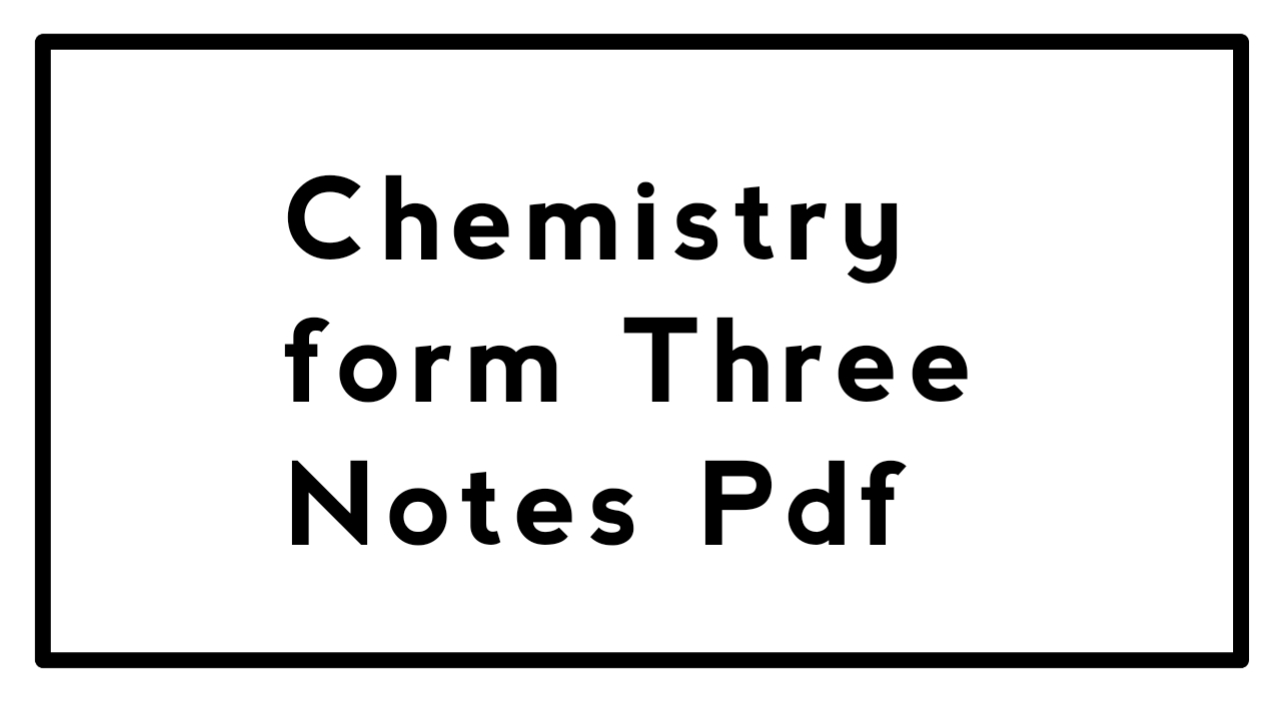Welcome to our comprehensive guide on Chemistry for Form Three students! Whether you’re gearing up for exams or just looking to solidify your understanding, these notes will help you grasp key concepts and principles.
DOWNLOADING HERE CHEMISTRY FORM THREE NOTES
Let’s dive into the essential topics covered in Form Three Chemistry.
1. Atomic Structure and Periodic Table
Understanding atomic structure is foundational in chemistry. Atoms are the basic units of matter, consisting of protons, neutrons, and electrons. The periodic table organizes elements based on their atomic structure and properties. Key topics include:
- Atomic Models: Learn about Dalton’s model, Thomson’s plum pudding model, Rutherford’s nuclear model, and Bohr’s model.
- Electron Configuration: Understand how electrons are arranged in atoms and how this configuration influences an element’s chemical behavior.
- Periodic Trends: Explore trends such as atomic radius, ionization energy, and electronegativity across periods and groups.
2. Chemical Bonding
Chemical bonding is crucial for understanding how atoms combine to form compounds. Key types of bonds include:
- Ionic Bonds: Formed when electrons are transferred from one atom to another, creating positive and negative ions that attract each other.
- Covalent Bonds: Involve the sharing of electrons between atoms, leading to the formation of molecules.
- Metallic Bonds: Occur between metal atoms where electrons are pooled together, contributing to properties like conductivity and malleability.
3. Chemical Reactions
Chemical reactions involve the transformation of reactants into products. Understanding different types of reactions is essential:
- Types of Reactions: Learn about synthesis, decomposition, single displacement, double displacement, and combustion reactions.
- Balancing Equations: Practice balancing chemical equations to adhere to the law of conservation of mass.
- Reaction Rates: Explore factors that influence the speed of reactions, including temperature, concentration, surface area, and catalysts.
4. Acids and Bases
The study of acids and bases involves understanding their properties, reactions, and the pH scale:
- Acid-Base Theories: Familiarize yourself with the Arrhenius, Bronsted-Lowry, and Lewis theories of acids and bases.
- pH Scale: Understand how to measure the acidity or basicity of solutions using the pH scale.
- Neutralization Reactions: Learn about reactions between acids and bases that produce water and salt.
5. Organic Chemistry
Organic chemistry focuses on carbon-containing compounds. Key concepts include:
- Hydrocarbons: Study alkanes, alkenes, and alkynes, and their properties and reactions.
- Functional Groups: Explore various functional groups like alcohols, aldehydes, ketones, and carboxylic acids.
- Isomerism: Understand structural isomers and stereoisomers, including geometric and optical isomers.
6. Chemical Calculations
Mastering chemical calculations is essential for solving quantitative problems in chemistry:
- Moles and Molarity: Learn how to calculate the number of moles and the concentration of solutions.
- Stoichiometry: Understand how to use mole ratios from balanced equations to perform calculations involving reactants and products.
Form Three Chemistry lays the groundwork for more advanced studies in the subject. By focusing on atomic structure, chemical bonding, reactions, acids and bases, organic chemistry, and chemical calculations, you’ll build a solid foundation. Regular practice, along with reviewing these notes, will help you excel in your chemistry coursework and exams.
